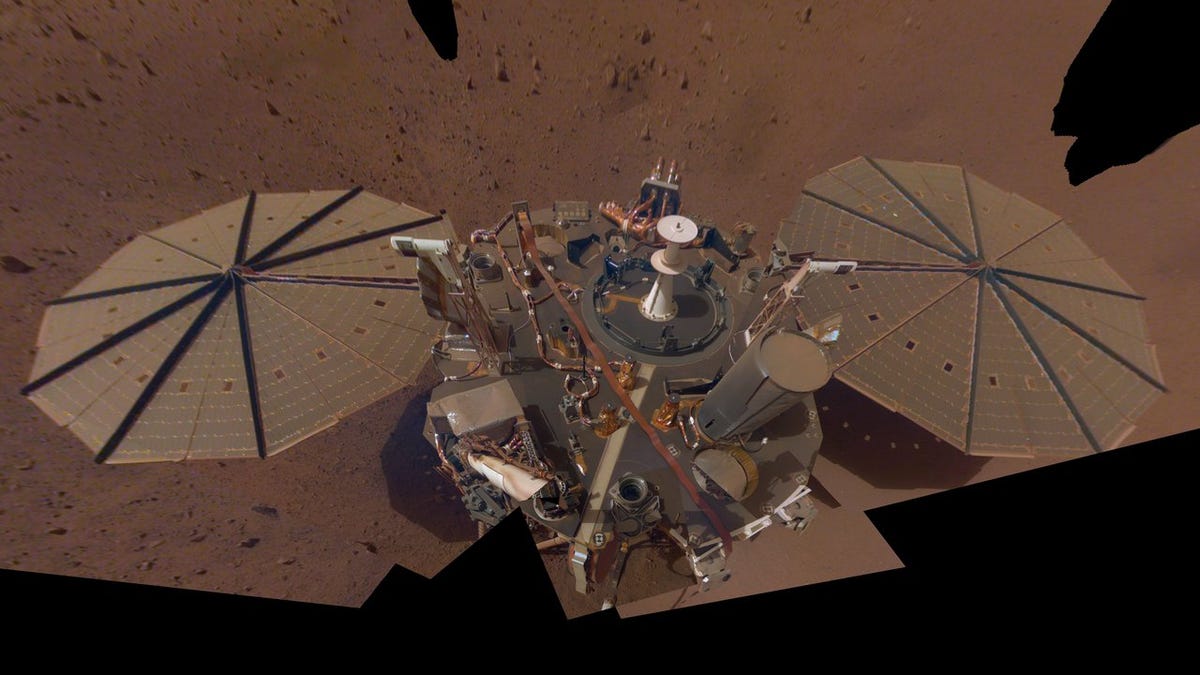NASA Shares Endgame Plans for Power-Starved Mars InSight Lander
InSight has taught us about the interior of Mars, but dusty solar panels mean the end is nigh.

NASA's Mars InSight lander snapped a selfie in early 2019. It had collected a thin coat of dust by this point.
NASA's InSight lander has illuminated the interior of Mars, recorded marsquakes and outlived its primary mission. The accomplished machine is now heading into its final days, as dust continues to clog its solar panels. On Tuesday, NASA laid out an expected timeline for InSight's finale.
In a teleconference, InSight principal investigator Bruce Banerdt said the lander is "coming to the end of its scientific life pretty soon." Dust-coated solar panels have forced the lander to operate on an extremely limited power supply.
The team is prioritizing power for the seismometer, an instrument that recorded a magnitude 5 "monster quake" in early May. NASA hopes the seismometer will continue to operate through spring 2022. With current power restraints, it'll likely be turned off sometime in July as InSight reaches the end of its science mission. NASA expects to conclude all InSight operations by the end of 2022.
Dust-caked solar panels are dictating the timeline for the end of InSight's mission.
InSight arrived on Mars in late 2018. When fresh and clean, the panels produced enough power to run an electric oven for an hour and 40 minutes each Martian day. Now that's down to about 10 minutes. NASA had hoped a dust devil would come along and clean off the lander's solar panels to help boost its power, but that hasn't happened. Unpredictable weather on Mars could change the timeline. A scrubbing whirlwind could extend operations, or a dust storm could shorten them.
InSight will spend some of its energy on tucking its movable arm into a "retirement pose" that'll give its camera a view of the seismometer. Once the seismometer goes off, InSight will occasionally snap a picture and communicate with Earth until the power runs too low to continue.
Though the impending close of a mission can be a sad occasion, Banerdt said "there hasn't been too much doom and gloom on the team" because there's still so much work going on with InSight. The recent marsquake -- the biggest ever detected on another planet -- shows the lander is still capable of delivering momentous data even as the finish line is in view.
InSight's successful mission has helped scientists map the planet's interior for the first time. Said NASA Planetary Science Division Director Lori Glaze, "It's given us a glimpse of Mars we couldn't get from any other spacecraft in our NASA Mars fleet."

